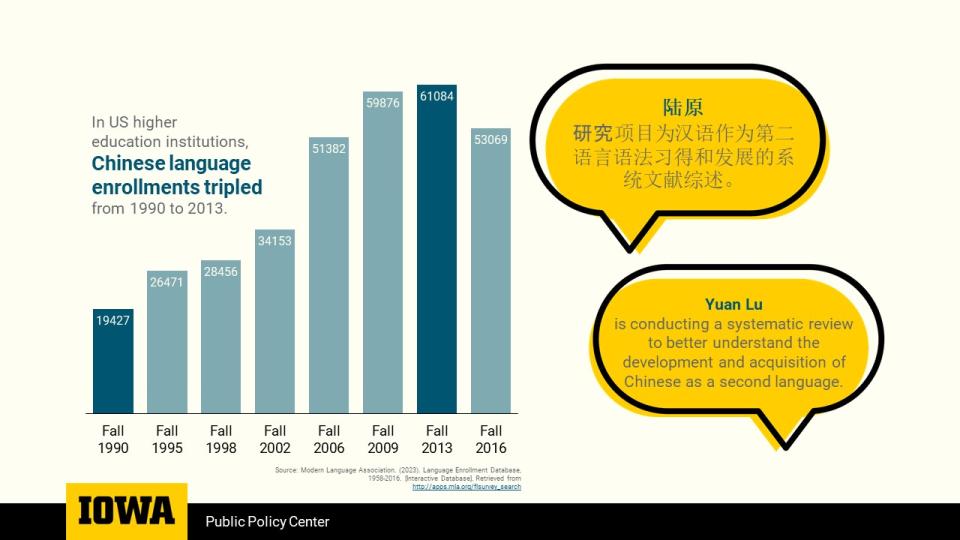
Summer Scholar Series - Yuan Lu
As one of the fastest growing languages in the world, Chinese has made its mark on both classrooms and workplaces in the United States. According to data from the Modern Language Association (MLA), Chinese language enrollments tripled from 1990 to 2013 in US education higher institutions. Despite recent declines in language enrollments, Chinese remains one of the most studied languages in the US. However, learning Chinese - and teaching it - is no simple feat.
To further understand the challenges of Chinese pedagogy, Yuan Lu, lecturer in Asian and Slavic Language and Literatures, is conducting the first ever systematic review assessing the development and acquisition of Chinese as a second language. A systematic review is a detailed and reproducible method of identifying all relevant studies on a specific topic. For his project, Lu is collecting studies from a wide variety of research databases (e.g. LLBA, ProQuest, PsycInfo, and Web of Science) that discuss the learning difficulties associated with Chinese grammar.
“Being a native speaker of Chinese does not necessarily mean that you are a good Chinese teacher,” Lu says. “That is why I want to conduct this systematic review to answer questions that teachers need to see in order to improve their teaching practices.”
While Lu works as an educator, the students he has taught in Chinese language classes are those hoping to go into medicine, technology or business. Of the three, business is where Lu believes that learning Chinese is the most beneficial.
“I think every student from business college should minor in Chinese because China is the second largest economy in the world,” Lu reflects. “If you are majoring in business and you know Chinese, you have a huge advantage in the job market.”
Lu has already collected the initial pool of research articles and is now working to determine which studies should be included in the final extraction. Lu aims to publish his findings in a peer reviewed applied linguistics journal by the 2024 Spring semester. Lu is hopeful that his research will ultimately make Chinese language learning easier for those who hope to harness it as a competitive advantage in their careers.
